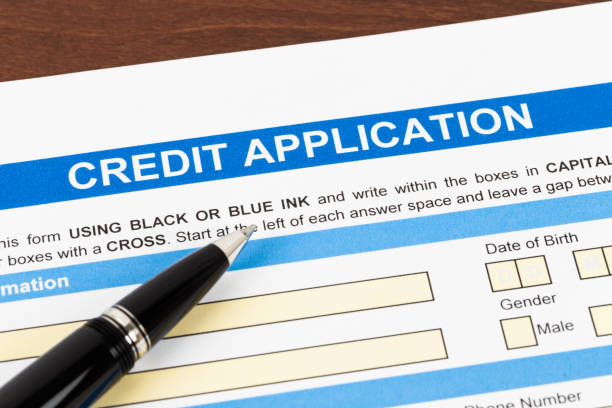When you’re purchasing car insurance, it’s easy to get caught up in the excitement of finding the right coverage and the best deal. But before you sign the dotted line, it’s crucial to take a moment and read the fine print of your car insurance policy. The terms and conditions of an insurance contract can be complex, and overlooking certain details can leave you with unexpected costs or gaps in coverage when you need it most.
In this article, we’ll break down some of the key areas of a typical car insurance policy that you should pay close attention to, so you can make informed decisions and avoid unpleasant surprises down the road.
1. Policy Limits: What You’re Actually Covered For
One of the most important things to understand in your car insurance policy is your coverage limits. These limits are the maximum amount your insurance company will pay out in the event of a claim. The policy typically outlines coverage for several types of incidents, and each comes with a specific limit.
Car insurance policies usually break down limits in a format like this:
100/300/50
Here’s what each number represents:
- 100: The maximum amount your insurance will pay for bodily injury liability per person involved in the accident.
- 300: The total maximum payout for all bodily injury liability claims resulting from a single accident (this is the per accident limit).
- 50: The maximum amount for property damage liability.
These limits can vary depending on your policy and insurer. It’s important to choose limits that are appropriate for your assets and risks. If you’re involved in an accident with injuries or substantial property damage, you’ll be responsible for paying anything beyond your coverage limits, which could leave you financially vulnerable.
2. Exclusions: What’s Not Covered
Every car insurance policy comes with exclusions, which are situations or types of damage that your policy will not cover. It’s important to carefully read this section, as exclusions can vary widely depending on your insurer and the type of coverage you have. Common exclusions might include:
- Driving under the influence: If you’re found driving while intoxicated, your insurance may not cover damages or injuries from the accident.
- Intentional damage: If you damage your vehicle intentionally (or cause harm while committing a crime), your insurer won’t cover the costs.
- Non-licensed drivers: If someone who is not listed on your policy, or is unlicensed, drives your vehicle and causes an accident, you may not be covered.
- Mechanical breakdowns: Insurance typically won’t cover damage from wear and tear or mechanical failure, unless the issue is caused by a covered event, such as an accident.
Be sure to review the exclusions in your policy to avoid any misunderstandings if you need to file a claim.
3. Deductibles: How Much You Pay Out of Pocket
A deductible is the amount of money you agree to pay out of pocket before your insurance coverage kicks in for a claim. Deductibles apply to certain types of coverage, such as comprehensive or collision insurance. The higher your deductible, the lower your premiums may be—but you’ll need to pay more upfront if you make a claim.
For example, if your policy has a $500 deductible and you’re in an accident that causes $3,000 in damage, you’d need to pay the first $500, and your insurer would cover the remaining $2,500 (after accounting for any other coverage limits or exclusions).
It’s essential to choose a deductible that you can afford in the event of an accident. If you set the deductible too high to save on premiums, you may find yourself financially strained if you have to file a claim. On the other hand, a lower deductible will increase your premium but provide more immediate financial relief in the event of a claim.
4. Coverage Types: What You’re Actually Paying For
Car insurance comes in various types, each offering different levels of protection. Here’s a rundown of the most common types of coverage you may encounter:
- Liability Coverage: This is the most basic form of car insurance and covers injuries and damages to other people or their property if you’re at fault in an accident. It typically includes bodily injury liability and property damage liability.
- Collision Coverage: This covers the cost of repairing your vehicle after a crash, regardless of who’s at fault. This coverage is typically optional, but if you have a car loan or lease, the lender or leasing company may require it.
- Comprehensive Coverage: This covers damages to your vehicle that occur outside of a collision, such as theft, vandalism, natural disasters, or hitting an animal. Like collision coverage, comprehensive insurance is often optional unless you’re financing or leasing your car.
- Personal Injury Protection (PIP): This coverage, also known as no-fault insurance, covers medical expenses for you and your passengers in the event of an accident, regardless of fault. It may also cover lost wages and other expenses related to the accident.
- Uninsured/Underinsured Motorist Coverage: If you’re in an accident with someone who doesn’t have enough insurance (or any insurance at all), this coverage protects you by covering medical costs and damages. This is especially important in states with high numbers of uninsured drivers.
Ensure that you fully understand what each type of coverage entails and make sure your policy includes the protection you need. For instance, if you live in an area prone to severe weather, you may want comprehensive coverage for storm damage or flooding.
5. Policy Endorsements: Adding Extra Coverage
Endorsements (or riders) are additional coverage options that can be added to your policy for an extra cost. These are useful if you need extra protection that isn’t included in the standard policy.
Some common endorsements include:
- Rental car coverage: If your car is being repaired after an accident, this endorsement can cover the cost of a rental car.
- Roadside assistance: Covers services like towing, flat tire repairs, and jump-starts if your car breaks down.
- Gap insurance: If your car is totaled in an accident and you owe more on your car loan than the car is worth, gap insurance can cover the difference.
Adding endorsements can increase your premium, so evaluate whether the extra coverage is necessary for your situation.
6. Policy Renewal and Changes: Review Your Coverage Annually
Car insurance policies are typically renewed every 6 or 12 months. It’s important to review your policy at renewal time to ensure that the coverage still meets your needs and that you’re not paying for unnecessary extras. Sometimes, insurers will raise premiums without your knowledge, so always compare your renewal offer with your original policy to ensure there are no surprise price hikes.
Additionally, as your life circumstances change—such as moving to a new location, purchasing a new vehicle, or experiencing changes in your driving habits—your insurance needs may change as well. For example, if you drive less than you used to, you may qualify for a lower rate.
7. Claims Process: Understand How to File
Understanding the claims process is crucial if you need to file a claim. Most policies include a detailed section explaining how to report an accident, what documentation you need to provide, and what steps you should follow after a collision or loss. It’s also essential to know how your insurer handles claims. Some insurers have a reputation for quickly processing claims, while others may be more challenging to work with.
Check for any deadlines or requirements for filing claims, as missing these deadlines could result in a denial of coverage.
Conclusion
Understanding the fine print of your car insurance policy is crucial to ensuring that you have the right coverage when you need it. From coverage limits and exclusions to deductibles, endorsements, and the claims process, every detail matters. By carefully reviewing these aspects of your policy, you can make sure that your car insurance adequately protects you and your assets. Always take the time to ask questions, review your policy annually, and make adjustments as needed to ensure you’re getting the best possible coverage for your specific needs.

